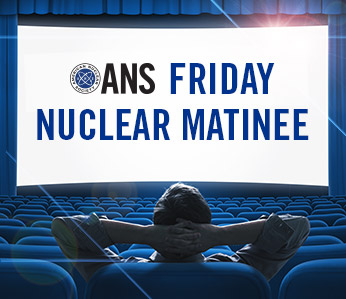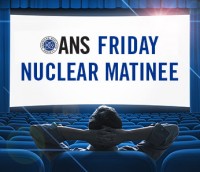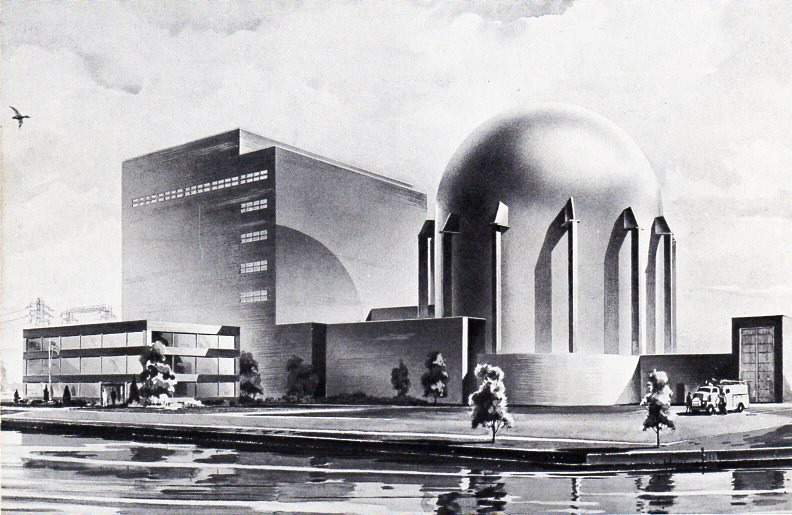Bill Gates makes a prediction about clean energy
Today's Friday Matinee: Bill Gates explains why "we need to pursue many different paths" to carbon-free energy, including the "very promising path" of nuclear. Grab your popcorn and enjoy the video.

Today's Friday Matinee: Bill Gates explains why "we need to pursue many different paths" to carbon-free energy, including the "very promising path" of nuclear. Grab your popcorn and enjoy the video.
2008-2009 American Nuclear Society President William Burchill is interviewed on the benefits of nuclear: "Nuclear Energy is a very big part of the solution for all of us." #Nuclear4Climate

This week's ANS Nuclear Cafe Friday Matinee features an update from South Carolina Electric & Gas on "A Year of Progress for V. C. Summer Units 2 and 3." These two AP1000 units are being built near an existing nuclear unit, and not too far from the former (now decommissioned) site of "The Southeast's First Nuclear Power Plant," the Carolinas-Virginia Tube Reactor.
 The 298th edition of the Nuclear Energy Blog Carnival has posted at Yes Vermont Yankee.
The 298th edition of the Nuclear Energy Blog Carnival has posted at Yes Vermont Yankee.
NASA's December 2015 report: Curiosity on Mars. Brought to you with the help from nuclear technology! Enjoy!
 Today's Matinee... learn about what goes on at a reactor facility to keep the environment safe and ensure all operations are at top level. Click to watch this short video from Canadian Nuclear Safety Commission.
Today's Matinee... learn about what goes on at a reactor facility to keep the environment safe and ensure all operations are at top level. Click to watch this short video from Canadian Nuclear Safety Commission.
 The 296th edition of the Nuclear Energy Blog Carnival has posted at Neutron Bytes.
The 296th edition of the Nuclear Energy Blog Carnival has posted at Neutron Bytes.
ANS member Sam Brinton talks about his passion, nuclear waste policy and changing the outdated images of nuclear advocates.

1955 artist's concept of the Enrico Fermi Atomic Power Plant. (Will Davis collection)
In the previous installment, we looked at the first of four projects to study nuclear power plants in the 1950-1953 time frame, as part of a group of studies for the U.S. Atomic Energy Commission (AEC). This time we'll look at two more.
 The 295th edition of the Nuclear Energy Blog Carnival has posted at Atomic Insights.
The 295th edition of the Nuclear Energy Blog Carnival has posted at Atomic Insights.
 The 294th edition of the Nuclear Energy Blog Carnival has posted at Hiroshima Syndrome.
The 294th edition of the Nuclear Energy Blog Carnival has posted at Hiroshima Syndrome.
Today's Friday Nuclear Matinee is about using irradiation to improve food safety and quality. It comes to us from the International Atomic Energy Agency. For more, check out NuclearConnect.org and the Agriculture Applications. Grab your popcorn and enjoy.

Just before the end of 2015, on December 30, the last operating Magnox reactor anywhere in the world was shut down for the final time, which ended a history for this type dating all the way back to 1956.
The president of the American Nuclear Society, Eugene Grecheck, was interviewed during COP21 in Paris, France. Enjoy this short video.
In 1950, there were few nuclear reactors of any sort operating anywhere in the world, even though it had been eight years since the startup of the very first pile. In that intervening time, the Manhattan Project had given way to the U.S. Atomic Energy Commission (AEC) and a variety of reactor types were discussed, debated, designed, and scheduled. None of these was what we today would call a true commercial nuclear plant-built for the purpose of selling electricity to customers. Instead, they were test types, prototypes, and experimental or research types. Large reactors were running at Hanford; these did not produce electricity, but rather plutonium for AEC weapons programs. Atomic energy was still considered far too undeveloped for serious consideration as a straight commercial power producer, and private industry was still barred from most all activities in the nuclear industry, embryonic as it was.
 The 287th edition of the Nuclear Energy Blog Carnival has posted at Yes Vermont Yankee.
The 287th edition of the Nuclear Energy Blog Carnival has posted at Yes Vermont Yankee.
By T. Marshall
American Nuclear Society President Eugene S. Grecheck and Director of Communications and Outreach Tari Marshall will be in Paris on December 2-9 as observer delegates and to represent one of the lead organizations for Nuclear for Climate. "It is critical that nuclear energy be front and center so that delegates understand the essential role that nuclear will play in reaching climate goals," Grecheck said.
If you were unable to be at the Opening Plenary of the ANS Winter Meeting in Washington, D.C., you missed the honoring of two pivotal leaders in nonproliferation efforts: former Secretary of State George Shultz and Dr. Sidney Drell. Both gentlemen were awarded the first Dwight D. Eisenhower Award by the Nuclear Nonproliferation Policy Division of the American Nuclear Society. Susan Eisenhower, granddaughter of President Eisenhower, presented the awards.